#Bristlecone Loop Trail
Video
Trees Guiding My Path Walked Along the Bristlecone Loop Trail (Bryce Canyon National Park) by Mark Stevens
Via Flickr:
A setting looking to the south while taking in views of this bristlecone and evergreen forest along the Bristlecone Loop Trail in Bryce Canyon National Park. My thought on composing this image was to use a portrait orientation to take advantage of the tall trees to my front. The hiking trail would also be a leading line into the image. The blue skies above would be that color contrast to complement the earth-tones in the lower portion of the image and also highlight those tall trees caught in the glow of morning sunlight.
#Aquarius Plateau#Azimuth 167#Blue Skies#Bristlecone Loop#Bristlecone Loop Trail#Bryce Canyon#Bryce Canyon National Park#Central Utah Plateaus#Colorado Plateau#Day 4#Desert Landscape#Desert Mountain Landscape#Desert Plant Life#DxO PhotoLab 5 Edited#Eastern Edge of the Paunsaugunt Plateau#Evergreen#Evergreens#Forest#Forest Landscape#High Desert#Hiking Path#Hiking Trail#Intermountain West#Landscape#Landscape - Scenery#Layers of Rock#Lodgepole Pine#Looking South#Nature#Nature Trail
2 notes
·
View notes
Text










Great Basin National Park, Nevada
A pair of little interpretive loops connected by scenic trails wandering past small lakes and the oddity of a rock glacier.
#hiking#nature#landscape#travel#hike#outside#day hike#mountains#lake#Stella Lake#Teresa Lake#rock glacier#glacier#Nevada#Great Basin National Park#interpretive trail#bristlecone pines#loop trail
0 notes
Text

Bristlecone Loop Trail, Brice Canyon National Park, Dixie National Forest, Utah, USA, 31 July 2024.😎
#original photography on tumblr#utahphotographer#snapshot#phtotographers on tumblr#landscape#hiking#wanderlust#landscape photography#hikingphotography#wanderer#mountainlandscape#mountians#utahmountains#national forest#nationalpark#hiking photography#hikingutah#utahphotography#utahlandscape#hikingaddict#hikingadventures#hikingtrails#hikingtrail#hikingtrip#usa#redrocks#travelphotography#mountainphotography#mountainous#backpacker
6 notes
·
View notes
Photo

Bristlecone Loop Trail, Bryce Canyon National Park
Bristlecone Loop, accessible from Rainbow Point at the southern-most end of Bryce Canyon National Park, meanders through a spruce-fir forest atop the highest portion of the park, reaching elevations over 9,100 feet. This short and easy stroll passes by bristlecone pines up to 1,800-years-old and experiences vistas reaching into Dixie National Forest and Grand Staircase-Escalante National Monument. While still popular, this far end of the park is not nearly as crowded as the primary amphitheater area, but no less beautiful.
3 notes
·
View notes
Text

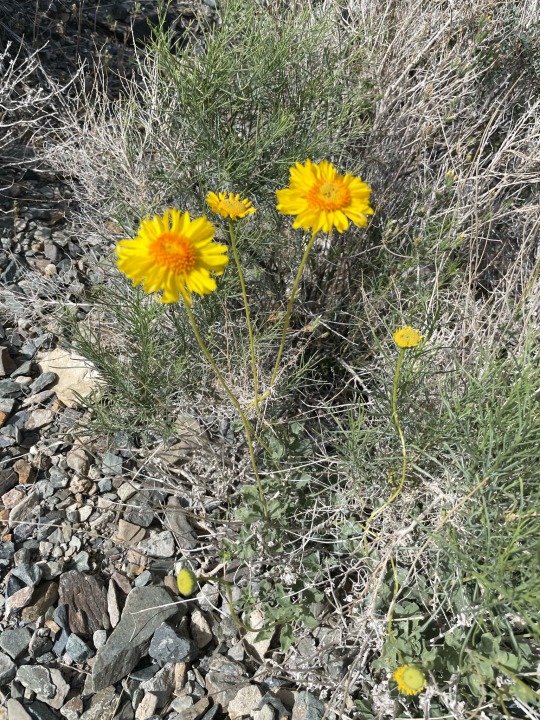


After a cup of coffee in camp, we walked 2 miles downhill to our car observing wildflowers and a horned lizard along the way.
We drove to the Ancient Bristlecone Pine Forest Visitors Center and did the Methuselah Trail, a 4.5 mile hiking loop through our planet’s oldest living organisms. Many of these gnarly trees are 4000-5000 years old.

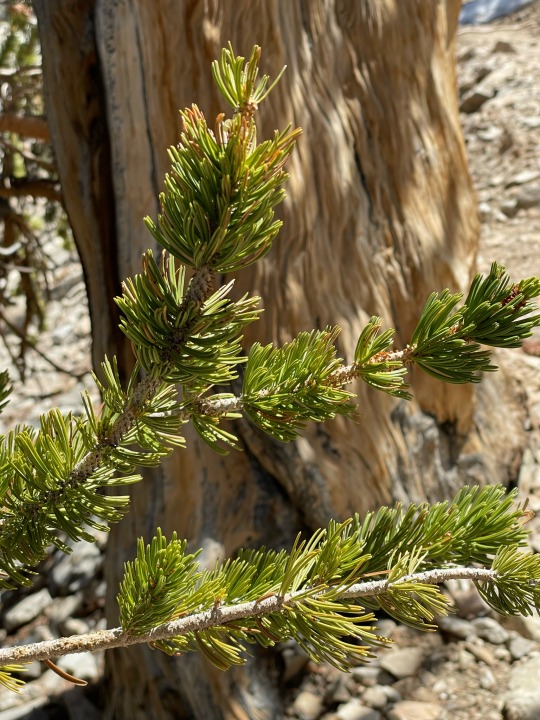


It was gusting wind, so we felt cold and hot while on the trail. The dry air and high elevation, 9000-10,000 feet made it more difficult. But the trees were truly magnificent.


#travelwithz#california#bishop#ancient bristlecone pine forest#trees#plants#biology#eastern Sierra Observatory#USA#2022
1 note
·
View note
Text
Bryce Canyon National Park in Utah, USA

Bryce Canyon National Park is located on the eastern edge of the Paunsaugunt Plateau in south central Utah,USA. Bryce Canyon National Monument (administered by the U.S. Forest Service) was originally established on June 8, 1923 to preserve the “unusual scenic beauty.” On June 7, 1924, the monument’s name was changed to Utah National Park and it was transferred to the National Park Service. On February 25, 1928″ Utah National Park was changed to Bryce Canyon National Park”.

The park is not a canyon. Rather, it is a spectacular series of 14 huge natural amphitheaters each which is carved at least 1,000 feet into the chromatic limestone of the Paunsaugunt Plateau. Thus, the geological features of Bryce Canyon represent the park's principal distinction. In fact, Bryce properly presents “one of the world's best sites” for an appreciation of the inexorable, titanic forces which have shaped the globe's surface. The Bryce Canyon was created from erosional force of frost-wedging and the dissolving power of rainwater have shaped the colorful calcium-rich mud stone of the Claron Formation into bizarre shapes including slot canyons, domes, pinnacles, windows, fins, natural bridges, arches, spires and temples accent an ethereal landscape called "hoodoos." Some hoodoos are taller than a 10-storey building.

The color of these rock formations, augmented by a rising or setting sun, is delicate and often extraordinarily beautiful. Reds, yellows, and whites are predominant, and 60 tints of these basic colors have been recognized. In southern Utah this rock is referred to as the Wasatch Formation or Pink Cliffs. The Paiute Native Americans called it "red rocks standing like men in a bowl-shaped canyon". (seeing this kind of view takes my breath away ,our God is so powerful to make this kind of Natural Art to be happen he is really a good creator imagined).
Things To Do in Bryce Canyon:

Hiking
The Mossy Cave Trail and Bristlecone Loop Trail are great short hikes for families with small children. The Rim Trail section between Sunset and Sunrise Points is paved and gives awesome views of hoodoos from above. And the Navajo Loop Trail, Peekaboo Loop Trail and Queen’s Garden Trail offers hikers the easiest access into the canyon.(You might even see some royalty because it’s look like your walking in the path where the palace is at the end!).

Scenic Driving
Those who are unable to hike can enjoy the park’s 18-mile scenic drive. Fairyland Canyon enter the park, just 1 mile off the main road that allows you an up-close view of the red rock spires.

Horseback Riding
The Thunder Mountain Trail climbs along the ridge in Red Canyon. It winds through the ponderosa forest and overlooks the hoodoo formations of the area. Enjoy several drainage, canyon, and narrows region with opportunities to see petroglyphs that ancient Indians left behind.

Camping and Stargazing
Bryce has two campgrounds, Sunset Campground and North Campground, and both have drinking water and pull-through sites, but no hookups. And also, Bryce Canyon offers world-class stargazing due to its exceptionally high air quality and long distance from sources of light pollution, leading some to call it the “last grand sanctuary of natural darkness. It is the prime destination for amateur astronomers to set up a telescope and observe celestial events, (but if you are not equipped to do that, you can sign up at the visitor center for one of the educational and entertaining stargazing programs organized by the parks”Dark Rangers” of course you have to pay no more free on this world)..

Winter Sports
The Rim Trail between Bryce Point and Fairyland Point is a good option for cross country skiing or snow shoeing, as well as the Bristlecone Loop and Paria Ski Loop. It’s a good idea to put on a traction device so you don’t slip. Such devices are available for sale at the visitor center. (This beautiful landscape place must really need to see and experience this kind of adventure on your next trip).
Photos By : Google | National Park Utah
Word Count : 636
https://www.nps.gov/brca/learn/historyculture/index.htm
https://www.visitutah.com/places-to-go/most-visited-parks/bryce-canyon/must-see-guide/#Driving
1 note
·
View note
Photo

Another beautiful hike completed! Nearly 6 miles on the Upper and Lower Bristlecone Trailhead Loop at Mt Charleston. Always nice with friends! ❤️ (at Bristlecone Trail at Mt Charleston) https://www.instagram.com/p/CFnhLKahNZgC-aHcjmk9gXjqkZuhz2IspJr9RM0/?igshid=1nhjed2a3xwuj
0 notes
Text
If You Really Want to Visit a National Park, Skip the Big Ones
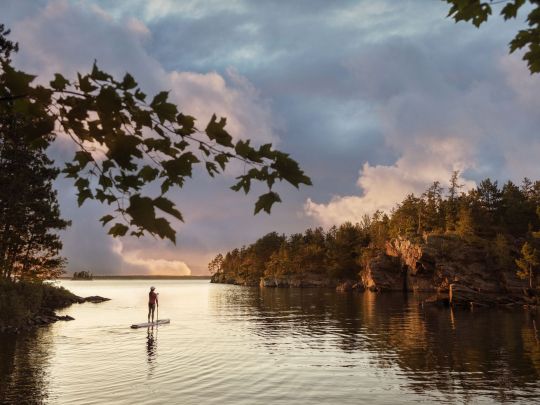
Paddleboarding in Minnesota’s Voyageurs National Park | Getty Images
America’s larger parks are attracting major crowds. Here’s where to avoid them
As summer creeps into full swing and cities across America do the dance of easing, and then reinstating, COVID-19 restrictions, people are clamoring to be someplace — anyplace — besides their own homes. While there is no form of travel that’s perfectly safe right now, there are certainly more responsible options than others for scratching the itch.
National parks, in all their wide-open space, are more befitting a socially distant vacation than, say, resort towns or theme parks. But even vast wilderness expanses have potential for riskier areas — visitor centers, for one, and popular trailheads near main parking areas. And then there are the mosh pit-like crowds at Yellowstone’s Old Faithful or the scenic drive at Zion National Park, which has been so popular since reopening that the park had to cap access at 6:30 a.m.
Now more than ever, then, this is the time to visit some of America’s lesser-known national parks. Steering clear of the millions of tourists at Yosemite, the Grand Canyon, and the Great Smoky Mountains, exploring new territory provides a sense of discovery, with the added benefit of having the trails mostly to yourself. The adventure doesn’t stop at park boundaries, either, as these less-famous parks are often surrounded by bucolic communities and smaller cities rich with their own charms, including destination-worthy restaurants, unexpected speakeasies, and a chicken-fried Texas saloon.
As enticing as all this sounds, it’s important that travelers tread carefully in and around all national parks, since these smaller gateway communities are not equipped to handle a potential outbreak brought in from visitors. It’s a double-edged sword for small businesses that rely on tourism dollars to survive, which is why it’s important to maintain the same caution on your road trip as you’ve maintained at home; just because you’re on vacation doesn’t mean you can put your face masks in storage. Wherever you are, social distancing and rigorous adherence to health mandates are of the utmost importance, in order to support these communities while keeping them safe.
So, with safety top of mind, here are some alternative parks to consider for your 2020 summer escape, and, of course, the best places to eat — to go, dine-in, or dine-out — nearby.

Getty Images/iStockphoto
The boardwalk at Congaree National Park
Congaree National Park, South Carolina
Judging by the fact that Congaree sees about 3 percent of the annual visitors of parks like Yellowstone and Rocky Mountain, it seems many people don’t even know this South Carolina park exists. Located in the middle of the state, the swamp-like terrain feels part Everglades and part Redwood, with the tallest trees east of the Mississippi and labyrinthine waterways ripe for paddling. The park’s most popular attractions, like the Boardwalk Trail, remain closed, but visitors are able to canoe or kayak on Cedar Creek, a narrow waterway that weaves through hardwood forest so tall and dense that it blocks out the sun, which is perhaps why hooting owls can be heard at all hours of the day. For easy hiking, out-of-the-way trails like the River Trail and Oakridge Trail are currently accessible. The park is within 20 miles of the state capital of Columbia, a small city with quality food and drink to be had.
Where to Eat: Before paddling through Congaree, it’s important to fuel up with a hearty breakfast, like tequila-spiked pancakes. Novelty breakfast is the bread and butter of the Black-owned 27 Pancakes food truck, which is operating on weekends only for the summer due to the pandemic. Chef-owner Joy Eggleston is a veritable Willy Wonka with pancake batter, offering classics (e.g., buttermilk, blueberry) alongside more whimsical and savory offerings, like a shrimp-and-grits pancake made with a grits batter, plump baby shrimp, and jalapenos, or the aforementioned tequila pancake, an almond-flour flapjack glazed with a blend of honey, maple syrup, and tequila reduction. Follow 27 Pancakes on social media to check its schedule.

Universal Images Group via Getty
The Starlight Theatre saloon in Terlingua, outside Big Bend
Big Bend National Park, Texas
About four and a half hours southeast of the closest major airport, in El Paso, this sprawling west Texas park has plenty of room (nearly 1 million acres, in fact) to spread out and explore, from Chisos Mountains hikes and soothing hot springs to the Santa Elena Canyon, a vast chasm offering shaded respite along the meandering Rio Grande. Due to its sheer size, geographic diversity, and faraway locale, this is the perfect park to immerse yourself in for a week, with plenty of sights and activities to keep you busy and enthralled. The surrounding communities are rich with character but low on crowds, like the dusty ghost town of Terlingua, which is emerging as a tranquil artist’s enclave, and the peaceful riverside town of Lajitas, where a goat serves as mayor.
Where to Eat and Drink: The star attraction in Terlingua is the Starlight Theatre, a lively contrast to a town filled with graves and derelict homes, both belonging to miners who succumbed to mercury poisoning or mining accidents in the early 1900s. The spacious saloon, known for its thoughtful riffs on gamey West Texas flavors, like chicken-fried wild boar strips with beer gravy and tequila-marinated quail in blueberry-balsamic sauce, is operating with dine-in and bar service at 50 percent capacity, and has added takeout as well as periodic live music performances.
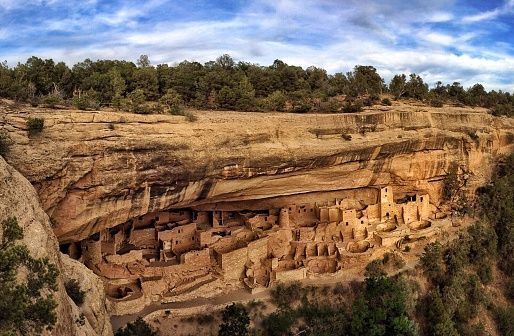
Getty Images/EyeEm
The famous cliff dwellings in Mesa Verde national park
Mesa Verde National Park, Colorado
In lush southwest Colorado, Mesa Verde National Park is once again beckoning visitors itching to hike, drive along the Mesa Top Loop Road, and marvel at the park’s famed cliff dwellings, elaborate structures and communities built centuries ago by Puebloan peoples. At just over 50,000 acres, the park is the perfect weekend getaway, renowned for its mesa-skimming scenic drives and hiking trails that make you feel like you’re traipsing through the clouds, surrounded by panoramic views of the Colorado valley. The arty gateway town of Mancos is small, but surprisingly abundant with galleries, cafes, and restaurants, which have navigated new methods of operation.
Where to Eat: Absolute Bakery & Cafe is a beloved community hub for locals and tourists alike, who pregame before Mesa Verde with avocado omelets, chicken Florentine, Cubano sandwiches, and house-baked pastries like cherry strudel, pumpkin brownies, and coconut-walnut blondies. Since COVID-19, the cafe has extended its service to seven days a week (up from six) in order to serve breakfast and lunch to go, along with take-and-bake meals like pot pie, quiche, and lasagna perfect for cooking up in the RV. It’s also started nightly pizza dinners for takeout, made with sourdough crusts and rotating toppings like asparagus pesto, Hawaiian, and pepperoni. The cafe strongly encourages guests to wear masks, and it’s stocked with hand sanitizer stations.
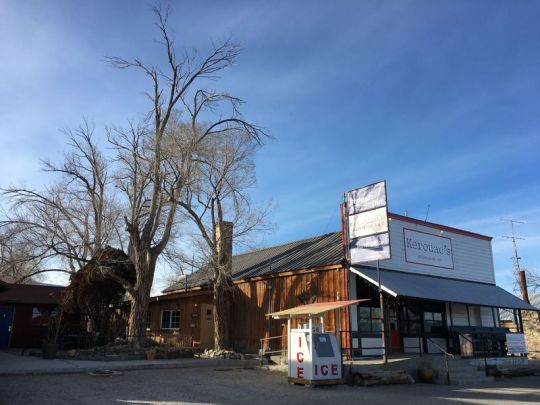
Matt Kirouac
Kerouac’s restaurant in Great Basin National Park
Great Basin National Park, Nevada
Located along U.S. Route 50, a highway so desolate that its nickname is “The Loneliest Road in America,” and next to the tiny town of Baker, Great Basin National Park is the ultimate park for social distancing. Aside from the people you travel with, it’s unlikely you’ll encounter other humans here at all. This Great Basin region of eastern Nevada, sandwiched between the Sierra Nevadas and Wasatch Mountains, is a place of extremes — from the skyscraping tip of Wheeler Peak, the highest point in the park (and second highest in Nevada) at 13,065 feet, to the craggy passageways within Lehman Caves and the gnarly looking bristlecone pines, the oldest trees on Earth, some nearing 5,000 years of age. Best of all? With under 200,000 annual visitors and 77,000 acres worth of diverse terrain, you’ll find plenty of solitude among the epic environs.
Where to Eat: An homage to the ultimate road-tripper, Kerouac’s Restaurant is a seasonal restaurant open May through October at the Stargazer Inn in Baker. Due to COVID-19, the restaurant is only offering counter service this year, with food and drink available to go or for dining on the homespun front patio. The menu reads like a hit list of American comfort classics, sure to satisfy after a long drive or a long hike. Think pesto-mushroom pizzas, spicy chicken sandwiches, veggie burgers, oatmeal cranberry cookies, and even strawberry-rhubarb Moscow mules.

Getty Images/iStockphoto
Grassy rolling hills in Wild Cave National Park
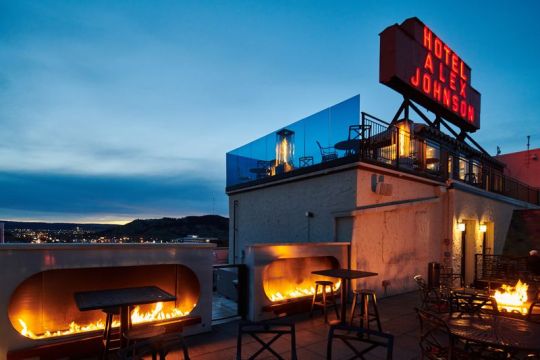
Hotel Alex Johnson / Facebook
The rooftop deck at Vertex Sky Bar in Rapid City
Wind Cave National Park, South Dakota
Western South Dakota is well known for iconic parks and monuments, like Badlands National Park and Mount Rushmore, but for those looking to eschew crowds, Wind Cave is a good choice for a day trip. Though the cave itself — a dense maze of jagged calcite formations, like needle-looking frostwork, and boxwork, a rare grid-shaped feature found in almost no other cave on Earth — is currently closed down, the park has many miles (and some 30,000 acres) of peaceful prairie hikes, rolling hills, and meadows strewn with wildflowers so vibrant they look like fields of confetti. Keep your eyes peeled for a chance to spot bison, prairie dogs, elk, and the rare black-footed ferret.
Where to Eat: As the urban hub of western South Dakota, Rapid City’s got an impressive food scene despite its small size and population. An hour’s drive from Wind Cave, head to the bi-level Vertex Sky Bar atop the historic Hotel Alex Johnson to drink in the Black Hills views while drinking in the rosé, or dine at Kōl, which reopened for reservations-only dine-in service with tables spread six feet apart, for wood-fired pizzas, steaks, and roast chicken. In the morning, downtown’s Harriet & Oak cafe reduced seating and limited the amount of time customers can linger to two hours, which is still enough to enjoy a trendy latte and some oh-so-Instagrammable avocado toast. Curbside pickup and online ordering is also available.
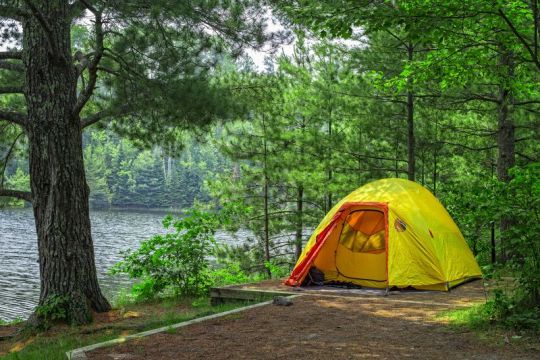
Getty Images/iStockphoto
Lost Lake campsite at Voyageurs National Park
Voyageurs National Park, Minnesota
On the northern border of Minnesota lies Voyageurs National Park, a tranquil landscape of lakes and islands, where loons replace the din of city sirens. Up here, in the heart of the Land of 10,000 Lakes, it’s easy to maintain social distance for a few days, considering a third of the 250,000-acre park is, well, water, and most activities involve kayaks, canoes, and fishing.
Where to Eat: It doesn’t get more quintessential Minnesota Northwoods than the Rocky Ledge, a cabin-like restaurant on the tree-lined shores of Kabetogama Lake, with a penchant for Minnesota specialties like wild rice casserole. And in case you weren’t able to reel in your own catch on the lake, fear not: the restaurant offers fry-bread fish tacos and breaded walleye sandwiches to make up for it.
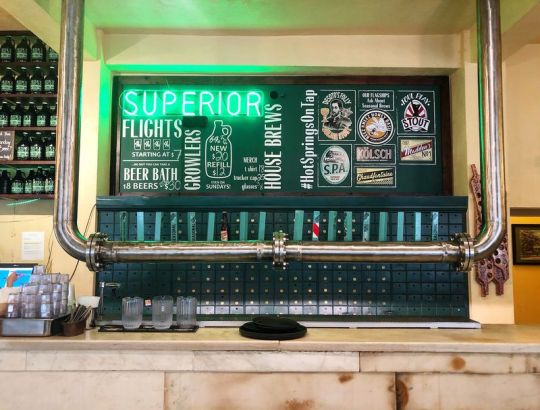
Matt Kirouac
The tap lineup at Superior Bathhouse
Hot Springs National Park, Arkansas
For travelers who prefer a more relaxed experience over, say, a backcountry trek, Arkansas’s historic Hot Springs is a tiny city park that’s ideal for an afternoon stopover. Anchored by ornate bathhouses utilizing the region’s famed thermal waters, the town is nicknamed “The American Spa,” and it’s been enticing visitors for more than a century. Bathhouse Row is the heart of the park, lined with steaming water fountains and palace-sized buildings with intricate Gilded Age architecture. While you may not be able to take a traditional bath quite yet, visitors can hike up the gentle slopes of Hot Springs Mountain, whose summit affords vista views of the bright-green Ouachita Mountain range, and then imbibe that spring water at the rare brewery located within a national park.
Where to Eat: Superior Bathhouse, located in one of the former bathhouses along Main Street’s Bathhouse Row, has reopened for limited counter service. Visitors are required to wear masks, unless they’re eating (beer cheese dip and sweet potato-beet sandwiches are excellent choices), or drinking one of the beers brewed on-site — e.g., hazy blood-orange I.P.A., honey-basil kolsch, oatmeal stout — made with Hot Springs’ thermal waters. To connect with the Southern soul of Hot Springs, head to Emma Lee’s, a warm and welcoming dining room wafting with aromas of buttery peach cobbler, beef roast, and fresh cornbread. The family-run restaurant is the dream of owner Courtney Sanders, who pays homage to his grandmother Emma Lee with her most beloved recipes. The restaurant is still offering curbside pickup along with limited dine-in service on Wednesdays, Thursdays, Saturdays, and Sundays. No matter what’s on deck for the day, be it thick slabs of smoky brisket and candied yams or mac and cheese served bubbling-hot under a golden-brown crust, this is the kind of restaurant that’s sure to warm hearts during a time when it’s needed most. Masks are required for entry, but customers can remove them while seated.
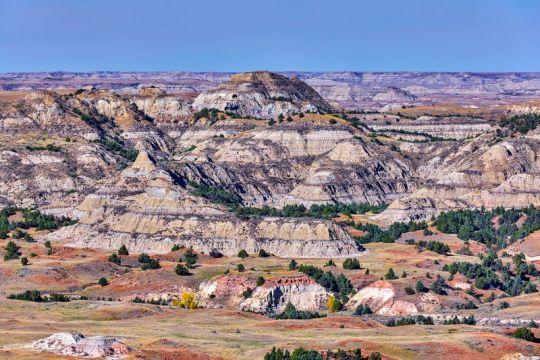
Getty Images
The rugged badlands of Theodore Roosevelt National Park
Theodore Roosevelt National Park, North Dakota
Badlands, petrified wood, roving bison, and wild horses make it clear what endeared President Theodore Roosevelt to this tranquil part of the country, where you’re more likely to encounter chirping prairie dogs on your hike than people. Split into two main north and south districts, each worth visiting for a day or two, the 70,000-acre park feels like the quintessential Wild West, with the Little Missouri River zig-zagging through fields of verdant grassland and eroded sandstone formations that look like super-sized sandcastles. Medora is the tiny home of the park’s popular south unit, but nearby Dickinson is a small city with an array of independent options.
Where to Eat: There’s really no better way to kickstart your day than with a blackberry pancake latte and a sticky caramel roll, and the Brew, a former church-turned-coffee shop, delivers on both fronts. Later, unwind with a sweet and spicy jalapeno honey beer and a Badlands pizza, made with pepperoni, Italian sausage, and ricotta, at Phat Fish Brewing. The brewpub is open for dine-in seating, with spaced-out indoor tables and a sprawling patio with a grassy lawn. It’s also offering take-and-bake pizza kits and bottled beers to go.

Getty Images/iStockphoto
An overlook at Black Canyon of the Gunnison National Park
Black Canyon of the Gunnison National Park, Colorado
With its blissfully warm temperatures, lush forests, and wildly diverse terrain, Colorado is popular for outdoorsy recreation, but rather than queueing up at crowded Rocky Mountain National Park, try the lesser-known Black Canyon of the Gunnison. The state’s least visited national park, Black Canyon is open for hiking along both the north and south rims, with trails that’ll get you unnervingly close to the breathtaking canyon and the raging river far below. Both sides of the canyon are worth visiting, so be sure to carve out at least two or three days to thoroughly explore. Since the only way to the north rim is driving all the way around the southern end of the canyon, it requires some added travel time. For fearless hikers, the park also has a few steep trails down to the canyon floor, which is a nice way to get out of the sun, since the canyon is so tall and narrow that it’s almost constantly shrouded in its own shadow. Nearby, the town of Montrose is the entry point to the park’s southern rim, which has the most trails and scenic viewpoints.
Where to Eat: It’s not often a speakeasy offering craft cocktails and charcuterie platters can be found on the outskirts of a national park, which is what makes Phelanies a special find. Accessed down an alley off one of Montrose’s main streets, the spacious lounge has gone alfresco for the first time, adding a patio and expanding its menus to include more food (like Korean barbecue pulled pork and duck wontons) and seasonal cocktails, like honeydew margaritas and the timely COVID Reviver No. 19, a Corpse Reviver riff with gin, orange liqueur, Lillet Blanc, lemon, and a CBD tincture. Guests are asked to wear masks any time they’re not seated, and limit movement around the bar except for necessities like bathroom runs.
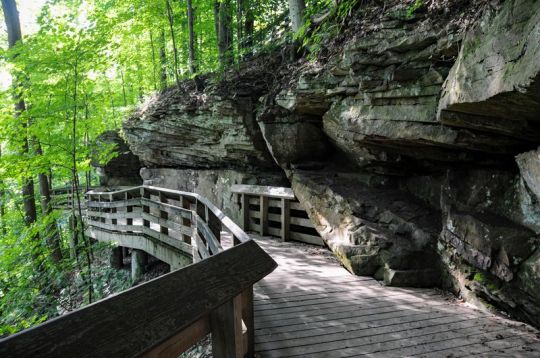
Getty Images/iStockphoto
The Brandywine Falls Trail at Cuyahoga Valley National Park
Cuyahoga Valley National Park, Ohio
Sandwiched between the nearby cities of Cleveland and Akron, hugging the crooked Cuyahoga River for some 30,000 acres, Cuyahoga Valley provides a literal breath of fresh air for Ohio city-dwellers seeking to escape the traffic for the day and replace it with dense green forests, babbling creeks, and 70-plus waterfalls. While popular sites like the Brandywine Falls boardwalk remain closed, there are still opportunities for hiking along miles of woodland trails, horseback riding, fishing, and kayaking.
Where to Eat: The park is a convenient day trip from larger cities in Ohio, making it ideal for safe travel, since visitors are able to minimize their footprint without having to stay overnight. If you’re traveling from Cleveland, start your day with a fried ring of purple-hued blueberry cake, bursting with juicy, tangy flavor, from the Vegan Doughnut Company. Located in suburban Lakewood, the Black-owned bakery from sisters Kharisma and Kyra Mayo exhibits a penchant for vibrant, whimsical pastries, like a birthday-cake doughnut strewn with multicolored sprinkles and crushed Golden Oreos, or a vanilla-glazed variety decorated with chocolate chips and dollops of cookie dough. For now, the shop is open weekends only for to-go doughnuts. Later, after you’ve chased a few waterfalls in the park, wood-fired pepperoni and banana-pepper pizza is an apt pick-me-up, and you can get your fix at Sarah’s Vineyard and Winery. Housed in a timber-clad barn that doubles as an art gallery, the lofty restaurant and tasting room has reopened for dine-in, spread out its ample patio seating, added hand sanitizer stations by the entrance, and shifted its menu to heartier crowd-pleasers like pulled pork sandwiches, nachos, and pizza. Sit outside for sweeping vineyard views and pair your spicy pie with a carafe of sweet Ohio-grown Vidal.
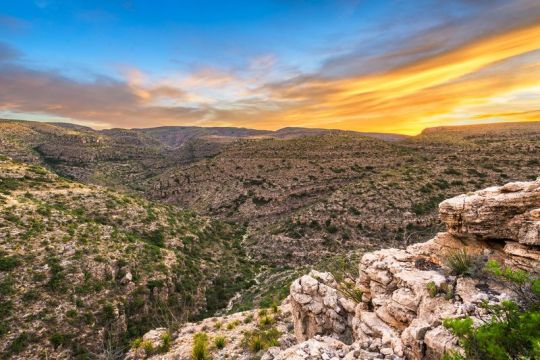
Getty Images/iStockphoto
Rattlesnake Canyon at Carlsbad Caverns National Park
Carlsbad Caverns National Park, New Mexico
The world-famous caverns — brimming with stalagmites, stalactites, and a colony of Brazilian free-tailed bats so populous that they look like clouds of swirling black smoke on their nightly flights — are still closed to visitors, but the underrated hiking trails on the surface are well worth the excursion, especially for a morning or late-afternoon hike (the sun gets pretty scorching midday). With nearly 50 miles of trails through the peaceful Chihuahuan Desert, from Rattlesnake Canyon to Guadalupe Ridge, there’s plenty to explore, and plenty of opportunity to break away from crowds and convene with cacti and roadrunners.
Where to Eat: In the nearby town of Carlsbad, Guadalupe Mountain Brewing Company reopened for dine-in service, with restricted hours and a patio. House-brewed beers run the gamut from a puckering grapefruit gose to creamy coconut porters, while the thin and crispy brick-oven pizzas are so popular they sell out regularly. They also offer gluten-free crusts, cauliflower-crust pizzas, and periodic specials like berry-studded dessert pizzas and New Mexican green chile pies.
A full-time RV traveler and freelance travel writer, Matt Kirouac is the co-founder and co-host of Hello Ranger, a national parks community blog, podcast, and forthcoming app.
from Eater - All https://ift.tt/38HIo58
https://ift.tt/2Zbjk3i

Paddleboarding in Minnesota’s Voyageurs National Park | Getty Images
America’s larger parks are attracting major crowds. Here’s where to avoid them
As summer creeps into full swing and cities across America do the dance of easing, and then reinstating, COVID-19 restrictions, people are clamoring to be someplace — anyplace — besides their own homes. While there is no form of travel that’s perfectly safe right now, there are certainly more responsible options than others for scratching the itch.
National parks, in all their wide-open space, are more befitting a socially distant vacation than, say, resort towns or theme parks. But even vast wilderness expanses have potential for riskier areas — visitor centers, for one, and popular trailheads near main parking areas. And then there are the mosh pit-like crowds at Yellowstone’s Old Faithful or the scenic drive at Zion National Park, which has been so popular since reopening that the park had to cap access at 6:30 a.m.
Now more than ever, then, this is the time to visit some of America’s lesser-known national parks. Steering clear of the millions of tourists at Yosemite, the Grand Canyon, and the Great Smoky Mountains, exploring new territory provides a sense of discovery, with the added benefit of having the trails mostly to yourself. The adventure doesn’t stop at park boundaries, either, as these less-famous parks are often surrounded by bucolic communities and smaller cities rich with their own charms, including destination-worthy restaurants, unexpected speakeasies, and a chicken-fried Texas saloon.
As enticing as all this sounds, it’s important that travelers tread carefully in and around all national parks, since these smaller gateway communities are not equipped to handle a potential outbreak brought in from visitors. It’s a double-edged sword for small businesses that rely on tourism dollars to survive, which is why it’s important to maintain the same caution on your road trip as you’ve maintained at home; just because you’re on vacation doesn’t mean you can put your face masks in storage. Wherever you are, social distancing and rigorous adherence to health mandates are of the utmost importance, in order to support these communities while keeping them safe.
So, with safety top of mind, here are some alternative parks to consider for your 2020 summer escape, and, of course, the best places to eat — to go, dine-in, or dine-out — nearby.

Getty Images/iStockphoto
The boardwalk at Congaree National Park
Congaree National Park, South Carolina
Judging by the fact that Congaree sees about 3 percent of the annual visitors of parks like Yellowstone and Rocky Mountain, it seems many people don’t even know this South Carolina park exists. Located in the middle of the state, the swamp-like terrain feels part Everglades and part Redwood, with the tallest trees east of the Mississippi and labyrinthine waterways ripe for paddling. The park’s most popular attractions, like the Boardwalk Trail, remain closed, but visitors are able to canoe or kayak on Cedar Creek, a narrow waterway that weaves through hardwood forest so tall and dense that it blocks out the sun, which is perhaps why hooting owls can be heard at all hours of the day. For easy hiking, out-of-the-way trails like the River Trail and Oakridge Trail are currently accessible. The park is within 20 miles of the state capital of Columbia, a small city with quality food and drink to be had.
Where to Eat: Before paddling through Congaree, it’s important to fuel up with a hearty breakfast, like tequila-spiked pancakes. Novelty breakfast is the bread and butter of the Black-owned 27 Pancakes food truck, which is operating on weekends only for the summer due to the pandemic. Chef-owner Joy Eggleston is a veritable Willy Wonka with pancake batter, offering classics (e.g., buttermilk, blueberry) alongside more whimsical and savory offerings, like a shrimp-and-grits pancake made with a grits batter, plump baby shrimp, and jalapenos, or the aforementioned tequila pancake, an almond-flour flapjack glazed with a blend of honey, maple syrup, and tequila reduction. Follow 27 Pancakes on social media to check its schedule.

Universal Images Group via Getty
The Starlight Theatre saloon in Terlingua, outside Big Bend
Big Bend National Park, Texas
About four and a half hours southeast of the closest major airport, in El Paso, this sprawling west Texas park has plenty of room (nearly 1 million acres, in fact) to spread out and explore, from Chisos Mountains hikes and soothing hot springs to the Santa Elena Canyon, a vast chasm offering shaded respite along the meandering Rio Grande. Due to its sheer size, geographic diversity, and faraway locale, this is the perfect park to immerse yourself in for a week, with plenty of sights and activities to keep you busy and enthralled. The surrounding communities are rich with character but low on crowds, like the dusty ghost town of Terlingua, which is emerging as a tranquil artist’s enclave, and the peaceful riverside town of Lajitas, where a goat serves as mayor.
Where to Eat and Drink: The star attraction in Terlingua is the Starlight Theatre, a lively contrast to a town filled with graves and derelict homes, both belonging to miners who succumbed to mercury poisoning or mining accidents in the early 1900s. The spacious saloon, known for its thoughtful riffs on gamey West Texas flavors, like chicken-fried wild boar strips with beer gravy and tequila-marinated quail in blueberry-balsamic sauce, is operating with dine-in and bar service at 50 percent capacity, and has added takeout as well as periodic live music performances.

Getty Images/EyeEm
The famous cliff dwellings in Mesa Verde national park
Mesa Verde National Park, Colorado
In lush southwest Colorado, Mesa Verde National Park is once again beckoning visitors itching to hike, drive along the Mesa Top Loop Road, and marvel at the park’s famed cliff dwellings, elaborate structures and communities built centuries ago by Puebloan peoples. At just over 50,000 acres, the park is the perfect weekend getaway, renowned for its mesa-skimming scenic drives and hiking trails that make you feel like you’re traipsing through the clouds, surrounded by panoramic views of the Colorado valley. The arty gateway town of Mancos is small, but surprisingly abundant with galleries, cafes, and restaurants, which have navigated new methods of operation.
Where to Eat: Absolute Bakery & Cafe is a beloved community hub for locals and tourists alike, who pregame before Mesa Verde with avocado omelets, chicken Florentine, Cubano sandwiches, and house-baked pastries like cherry strudel, pumpkin brownies, and coconut-walnut blondies. Since COVID-19, the cafe has extended its service to seven days a week (up from six) in order to serve breakfast and lunch to go, along with take-and-bake meals like pot pie, quiche, and lasagna perfect for cooking up in the RV. It’s also started nightly pizza dinners for takeout, made with sourdough crusts and rotating toppings like asparagus pesto, Hawaiian, and pepperoni. The cafe strongly encourages guests to wear masks, and it’s stocked with hand sanitizer stations.

Matt Kirouac
Kerouac’s restaurant in Great Basin National Park
Great Basin National Park, Nevada
Located along U.S. Route 50, a highway so desolate that its nickname is “The Loneliest Road in America,” and next to the tiny town of Baker, Great Basin National Park is the ultimate park for social distancing. Aside from the people you travel with, it’s unlikely you’ll encounter other humans here at all. This Great Basin region of eastern Nevada, sandwiched between the Sierra Nevadas and Wasatch Mountains, is a place of extremes — from the skyscraping tip of Wheeler Peak, the highest point in the park (and second highest in Nevada) at 13,065 feet, to the craggy passageways within Lehman Caves and the gnarly looking bristlecone pines, the oldest trees on Earth, some nearing 5,000 years of age. Best of all? With under 200,000 annual visitors and 77,000 acres worth of diverse terrain, you’ll find plenty of solitude among the epic environs.
Where to Eat: An homage to the ultimate road-tripper, Kerouac’s Restaurant is a seasonal restaurant open May through October at the Stargazer Inn in Baker. Due to COVID-19, the restaurant is only offering counter service this year, with food and drink available to go or for dining on the homespun front patio. The menu reads like a hit list of American comfort classics, sure to satisfy after a long drive or a long hike. Think pesto-mushroom pizzas, spicy chicken sandwiches, veggie burgers, oatmeal cranberry cookies, and even strawberry-rhubarb Moscow mules.

Getty Images/iStockphoto
Grassy rolling hills in Wild Cave National Park

Hotel Alex Johnson / Facebook
The rooftop deck at Vertex Sky Bar in Rapid City
Wind Cave National Park, South Dakota
Western South Dakota is well known for iconic parks and monuments, like Badlands National Park and Mount Rushmore, but for those looking to eschew crowds, Wind Cave is a good choice for a day trip. Though the cave itself — a dense maze of jagged calcite formations, like needle-looking frostwork, and boxwork, a rare grid-shaped feature found in almost no other cave on Earth — is currently closed down, the park has many miles (and some 30,000 acres) of peaceful prairie hikes, rolling hills, and meadows strewn with wildflowers so vibrant they look like fields of confetti. Keep your eyes peeled for a chance to spot bison, prairie dogs, elk, and the rare black-footed ferret.
Where to Eat: As the urban hub of western South Dakota, Rapid City’s got an impressive food scene despite its small size and population. An hour’s drive from Wind Cave, head to the bi-level Vertex Sky Bar atop the historic Hotel Alex Johnson to drink in the Black Hills views while drinking in the rosé, or dine at Kōl, which reopened for reservations-only dine-in service with tables spread six feet apart, for wood-fired pizzas, steaks, and roast chicken. In the morning, downtown’s Harriet & Oak cafe reduced seating and limited the amount of time customers can linger to two hours, which is still enough to enjoy a trendy latte and some oh-so-Instagrammable avocado toast. Curbside pickup and online ordering is also available.

Getty Images/iStockphoto
Lost Lake campsite at Voyageurs National Park
Voyageurs National Park, Minnesota
On the northern border of Minnesota lies Voyageurs National Park, a tranquil landscape of lakes and islands, where loons replace the din of city sirens. Up here, in the heart of the Land of 10,000 Lakes, it’s easy to maintain social distance for a few days, considering a third of the 250,000-acre park is, well, water, and most activities involve kayaks, canoes, and fishing.
Where to Eat: It doesn’t get more quintessential Minnesota Northwoods than the Rocky Ledge, a cabin-like restaurant on the tree-lined shores of Kabetogama Lake, with a penchant for Minnesota specialties like wild rice casserole. And in case you weren’t able to reel in your own catch on the lake, fear not: the restaurant offers fry-bread fish tacos and breaded walleye sandwiches to make up for it.

Matt Kirouac
The tap lineup at Superior Bathhouse
Hot Springs National Park, Arkansas
For travelers who prefer a more relaxed experience over, say, a backcountry trek, Arkansas’s historic Hot Springs is a tiny city park that’s ideal for an afternoon stopover. Anchored by ornate bathhouses utilizing the region’s famed thermal waters, the town is nicknamed “The American Spa,” and it’s been enticing visitors for more than a century. Bathhouse Row is the heart of the park, lined with steaming water fountains and palace-sized buildings with intricate Gilded Age architecture. While you may not be able to take a traditional bath quite yet, visitors can hike up the gentle slopes of Hot Springs Mountain, whose summit affords vista views of the bright-green Ouachita Mountain range, and then imbibe that spring water at the rare brewery located within a national park.
Where to Eat: Superior Bathhouse, located in one of the former bathhouses along Main Street’s Bathhouse Row, has reopened for limited counter service. Visitors are required to wear masks, unless they’re eating (beer cheese dip and sweet potato-beet sandwiches are excellent choices), or drinking one of the beers brewed on-site — e.g., hazy blood-orange I.P.A., honey-basil kolsch, oatmeal stout — made with Hot Springs’ thermal waters. To connect with the Southern soul of Hot Springs, head to Emma Lee’s, a warm and welcoming dining room wafting with aromas of buttery peach cobbler, beef roast, and fresh cornbread. The family-run restaurant is the dream of owner Courtney Sanders, who pays homage to his grandmother Emma Lee with her most beloved recipes. The restaurant is still offering curbside pickup along with limited dine-in service on Wednesdays, Thursdays, Saturdays, and Sundays. No matter what’s on deck for the day, be it thick slabs of smoky brisket and candied yams or mac and cheese served bubbling-hot under a golden-brown crust, this is the kind of restaurant that’s sure to warm hearts during a time when it’s needed most. Masks are required for entry, but customers can remove them while seated.

Getty Images
The rugged badlands of Theodore Roosevelt National Park
Theodore Roosevelt National Park, North Dakota
Badlands, petrified wood, roving bison, and wild horses make it clear what endeared President Theodore Roosevelt to this tranquil part of the country, where you’re more likely to encounter chirping prairie dogs on your hike than people. Split into two main north and south districts, each worth visiting for a day or two, the 70,000-acre park feels like the quintessential Wild West, with the Little Missouri River zig-zagging through fields of verdant grassland and eroded sandstone formations that look like super-sized sandcastles. Medora is the tiny home of the park’s popular south unit, but nearby Dickinson is a small city with an array of independent options.
Where to Eat: There’s really no better way to kickstart your day than with a blackberry pancake latte and a sticky caramel roll, and the Brew, a former church-turned-coffee shop, delivers on both fronts. Later, unwind with a sweet and spicy jalapeno honey beer and a Badlands pizza, made with pepperoni, Italian sausage, and ricotta, at Phat Fish Brewing. The brewpub is open for dine-in seating, with spaced-out indoor tables and a sprawling patio with a grassy lawn. It’s also offering take-and-bake pizza kits and bottled beers to go.

Getty Images/iStockphoto
An overlook at Black Canyon of the Gunnison National Park
Black Canyon of the Gunnison National Park, Colorado
With its blissfully warm temperatures, lush forests, and wildly diverse terrain, Colorado is popular for outdoorsy recreation, but rather than queueing up at crowded Rocky Mountain National Park, try the lesser-known Black Canyon of the Gunnison. The state’s least visited national park, Black Canyon is open for hiking along both the north and south rims, with trails that’ll get you unnervingly close to the breathtaking canyon and the raging river far below. Both sides of the canyon are worth visiting, so be sure to carve out at least two or three days to thoroughly explore. Since the only way to the north rim is driving all the way around the southern end of the canyon, it requires some added travel time. For fearless hikers, the park also has a few steep trails down to the canyon floor, which is a nice way to get out of the sun, since the canyon is so tall and narrow that it’s almost constantly shrouded in its own shadow. Nearby, the town of Montrose is the entry point to the park’s southern rim, which has the most trails and scenic viewpoints.
Where to Eat: It’s not often a speakeasy offering craft cocktails and charcuterie platters can be found on the outskirts of a national park, which is what makes Phelanies a special find. Accessed down an alley off one of Montrose’s main streets, the spacious lounge has gone alfresco for the first time, adding a patio and expanding its menus to include more food (like Korean barbecue pulled pork and duck wontons) and seasonal cocktails, like honeydew margaritas and the timely COVID Reviver No. 19, a Corpse Reviver riff with gin, orange liqueur, Lillet Blanc, lemon, and a CBD tincture. Guests are asked to wear masks any time they’re not seated, and limit movement around the bar except for necessities like bathroom runs.

Getty Images/iStockphoto
The Brandywine Falls Trail at Cuyahoga Valley National Park
Cuyahoga Valley National Park, Ohio
Sandwiched between the nearby cities of Cleveland and Akron, hugging the crooked Cuyahoga River for some 30,000 acres, Cuyahoga Valley provides a literal breath of fresh air for Ohio city-dwellers seeking to escape the traffic for the day and replace it with dense green forests, babbling creeks, and 70-plus waterfalls. While popular sites like the Brandywine Falls boardwalk remain closed, there are still opportunities for hiking along miles of woodland trails, horseback riding, fishing, and kayaking.
Where to Eat: The park is a convenient day trip from larger cities in Ohio, making it ideal for safe travel, since visitors are able to minimize their footprint without having to stay overnight. If you’re traveling from Cleveland, start your day with a fried ring of purple-hued blueberry cake, bursting with juicy, tangy flavor, from the Vegan Doughnut Company. Located in suburban Lakewood, the Black-owned bakery from sisters Kharisma and Kyra Mayo exhibits a penchant for vibrant, whimsical pastries, like a birthday-cake doughnut strewn with multicolored sprinkles and crushed Golden Oreos, or a vanilla-glazed variety decorated with chocolate chips and dollops of cookie dough. For now, the shop is open weekends only for to-go doughnuts. Later, after you’ve chased a few waterfalls in the park, wood-fired pepperoni and banana-pepper pizza is an apt pick-me-up, and you can get your fix at Sarah’s Vineyard and Winery. Housed in a timber-clad barn that doubles as an art gallery, the lofty restaurant and tasting room has reopened for dine-in, spread out its ample patio seating, added hand sanitizer stations by the entrance, and shifted its menu to heartier crowd-pleasers like pulled pork sandwiches, nachos, and pizza. Sit outside for sweeping vineyard views and pair your spicy pie with a carafe of sweet Ohio-grown Vidal.

Getty Images/iStockphoto
Rattlesnake Canyon at Carlsbad Caverns National Park
Carlsbad Caverns National Park, New Mexico
The world-famous caverns — brimming with stalagmites, stalactites, and a colony of Brazilian free-tailed bats so populous that they look like clouds of swirling black smoke on their nightly flights — are still closed to visitors, but the underrated hiking trails on the surface are well worth the excursion, especially for a morning or late-afternoon hike (the sun gets pretty scorching midday). With nearly 50 miles of trails through the peaceful Chihuahuan Desert, from Rattlesnake Canyon to Guadalupe Ridge, there’s plenty to explore, and plenty of opportunity to break away from crowds and convene with cacti and roadrunners.
Where to Eat: In the nearby town of Carlsbad, Guadalupe Mountain Brewing Company reopened for dine-in service, with restricted hours and a patio. House-brewed beers run the gamut from a puckering grapefruit gose to creamy coconut porters, while the thin and crispy brick-oven pizzas are so popular they sell out regularly. They also offer gluten-free crusts, cauliflower-crust pizzas, and periodic specials like berry-studded dessert pizzas and New Mexican green chile pies.
A full-time RV traveler and freelance travel writer, Matt Kirouac is the co-founder and co-host of Hello Ranger, a national parks community blog, podcast, and forthcoming app.
from Eater - All https://ift.tt/38HIo58
via Blogger https://ift.tt/2DnLPCm
0 notes
Text
June 15 - DAY 3 (Mon.) We left for Bryce Canyon around 10am after picking up breakfast sandwiches at MeMe’s cafe (great spot!) right across from Deep Creek Cafe which had a line 20 people deep. Cafe is highly recommended - good selection and outdoor seating available. Also went to Sol Grocer across the street from MeMe’s cafe to get more water and sandwiches for the day trip. The 2 hour drive was amazingly scenic as we left Zion National Park. The road was windy and seemed like we were on another planet. We arrived at the visitor center around 12pm to pickup maps and gather our bearings. Our first hike was Sunrise Pt to Sunset Pt connecting two trails - Queens Garden Trail and the Navajo Loop. This was utterly breathtaking!! We ended with the Wall Street slot Canyon and Thor’s Hammer! What a sight! Thereafter, we drove to the end of the scenic drive to Rainbow Point (e. 9115) and did the Bristlecone Loop Trail. From here, we did the scenic drive back and stopped at Agua Canyon, Natural Bridge, and Fairview Point. We had dinner at Bryce Pines Inn which had great American Steak, Burgers, Trout, Mac N Cheese and PIES! Apple, Peach, Banna/Strawberries and Cream Pies! Come here for a slice a heaven!
0 notes
Photo

National Parks of the Grand Circle
National Parks of the Grand Circle: Here's Your Itinerary to Visit the National Parks of the Grand Circle If you live near Salt Lake City, Denver, Phoenix, Albuquerque or Las Vegas, you can hop on the Grand Circle in about 3 to 4 hours and start your National Parks of the Grand Circle Tour! Of course, you can also fly in to any of those cities to start your adventure. No matter where you start, you can easily visit nine national parks with relative ease. And there's really no better way to see this country than from the open road! At most of these parks, you can either camp or take advantage of lodging inside or nearby. The Grand Circle features some of the most spectacular national parks in the American West: Zion, Bryce Canyon, Capitol Reef, Canyonlands, Arches, Black Canyon of the Gunnison, Mesa Verde, Petrified Forest and Grand Canyon. Great Basin National Park is also part of the Grand Circle, but is a bit out of the way -- I'll talk about an option to visit there near the end of this post. Let's start our Grand Circle Tour from Las Vegas, which provides easy access to Zion National Park! It's less than 3 hours from Las Vegas to Springdale, Utah, where you will find plenty of options for lodging and camping. Zion National Park At Zion National Park you can gaze up at massive sandstone towers and cliffs of cream, pink, and red that soar into a brilliant blue sky. Or, explore the Virgin River in a narrow slot canyon, which I highly recommend if the conditions are favorable. Hiking The Narrows is truly a once-in-a-lifetime experience! Established in 1919, today you can follow the paths where ancient native people and pioneers walked and experience the special places they left behind. Learn about the park's plant and animal life, geology, ecosystems, and other natural features. Check out the Best Things to do at Zion National Park here… As a photographer, I try to stay at least two nights in each park to make sure I have time to explore and to hopefully have good weather on at least one of the days. But if your time is short, you can try to get to Zion early, spend the day there and part of the next before heading on to Bryce Canyon National Park. Bryce Canyon National Park It's just a quick hour and twenty minute drive to Bryce Canyon National Park from Zion where you'll be able to see the world's largest collection of Hoodoos! Plenty of camping and lodging options here as well. Established in 1928, at Bryce Canyon National Park you can explore the world's largest collection of hoodoos, fins, walls and windows. These hoodoos, odd-shaped pillars of rock left standing from the forces of erosion, and "frost-wedging", which over time shatters and pries rock apart. In addition, rain water, which is naturally acidic, slowly dissolves the limestone, rounding off edges and washing away debris. Click here to learn more about Bryce Canyon National Park Bryce Canyon is one of my all-time favorite national parks, and I highly recommend getting to the rim of the canyon for sunset. And sunrise is actually even more magical! You can hike down into the canyon or stay high along the rim. Either way, there are spectacular views everywhere you go. In addition to hiking and biking, Canyon Trail Rides wranglers lead 2-hour and 3-hour horse and mule rides into the Bryce Amphitheater along a dedicated horse trail and the Peek-a-boo Loop Trail. It's a great way to see the park! Capitol Reef National Park Capitol Reef is about a two hour drive from Bryce Canyon. Depending on your timing, this is a park where you can make a shorter stop in the Fruita Historic District and take a short hike and continue on to Moab where you'll visit Arches and Canyonlands. Or you can camp inside the park in the Fruita Historic District, too. If you're looking for lodging, the closest place is in the town of Torrey or at the Capitol Reef Resort, just outside the park. Established in 1971, Capitol Reef National Park is a hidden treasure of cliffs, canyons, domes and bridges. It lies in the Waterpocket Fold, a geologic monocline – or wrinkle – extending almost 100 miles. Archaic hunters and gatherers first settled here. Explorers, Mormon pioneers and others arrived in the 1800s, settled in what is now the Fruita Rural Historic District and planted orchards of apples, pears, and peaches. Click here to learn more about Capitol Reef National Park Next up is Moab, home to Arches and Canyonlands National Parks. It's about a 2 hour drive from Capitol Reef -- and each park deserves a full day of exploration. Neither park has lodging so you'll want to stay in Moab. Both parks do have campgrounds. Arches National Park Established in 1971, visitors to Arches National Park discover a landscape of contrasting colors, landforms and textures unlike any other in the world. Perched high above the Colorado River, the park has over 2,000 natural stone arches – including the world-famous Delicate Arch – in addition to hundreds of soaring pinnacles, massive fins and giant balanced rocks, each carved and shaped by eons of weathering and erosion. Check out the Best Things to do at Arches National Park here… Canyonlands Established in 1964, today at Canyonlands National Park you can explore a wilderness of countless canyons and fantastically formed buttes carved by the Green and Colorado rivers and their tributaries. Divided into four districts, the Island in the Sky, the Needles, the Maze, and the rivers themselves, these areas share a primitive desert atmosphere, but each offers unique opportunities for sightseeing and adventure. Check out the Best Things to do at Canyonlands National Park here… Now that we've completed our tour of Utah's “Mighty Five” -- it's on to Colorado and a 3 hour drive to Black Canyon of the Gunnison National Park. Black Canyon of the Gunnison National Park Black Canyon of the Gunnison National Park exposes you to some of the steepest cliffs, oldest rock, and craggiest spires in North America. With two million years to work, the Gunnison River, along with the weathering forces of nature, has sculpted this vertical wilderness of rock, water, and sky. Established in 1999, this deep, steep and narrow canyon is big enough to be overwhelming, yet intimate enough to feel the pulse of time. From here, we'll head south to Mesa Verde National Park. This is a scenic 3 hour and 45 minute drive, and Telluride is a great place to stop for lunch or take a break. Alternatively, you could go through Ouray, Silverton and Durango, which will add 20 minutes or so to the drive. Check out the Best Things to do at Black Canyon of the Gunnison National Park... Mesa Verde National Park Mesa Verde National Park offers a spectacular look into the lives of the Ancestral Pueblo people who made it their home for over 700 years, from AD 600 to 1300. Established in 1906, today the park protects nearly 5,000 known archaeological sites, including 600 cliff dwellings, mesa top pueblos, farming terraces, towers, reservoirs, and check dams. These sites are some of the most notable and best preserved in the United States. There's lodging and camping in the park -- and when I was there last, we had an excellent meal and the Metate Room Restaurant -- and there's an amazing view from every table! Check out the Best Things to do at Mesa Verde National Park here… Petrified Forest is our next stop on the Grand Circle, and you're looking at a four hour drive, most of it through New Mexico, then on into Arizona. Petrified Forest National Park Established in 1962, Petrified Forest National Park is best known for its fossils, especially fallen trees from the Late Triassic period of the Mesozoic era, about 225 million years ago. This was a time when the climate was humid and subtropical. The sediments containing the fossil logs are part of the widespread and colorful Chinle Formation. More than 600 archaeological sites, including petroglyphs, have also been discovered in the park. There's no lodging at Petrified Forest National Park, and only backcountry camping (no facilities). The nearest lodging is in the town of Holbrook, about 26 miles away. Depending on your timing, you can see Petrified Forest National Park in one day. One main road bisects the park, and you can stop along the way and see many of the park's main points of interest. Click Here to Learn More About Petrified Forest National Park. Now it's on to our final destination: The Grand Canyon! Grand Canyon National Park The Grand Canyon overwhelms our senses through its immense size: 277 river miles long, up to 18 miles wide, and a mile deep. Grand Canyon National Park, established in 1919, exposes unique combinations of geologic color and erosional forms. You can explore the canyon by mule, bicycle, by hiking or backpacking or on whitewater and smooth water raft trips along the Colorado River. The South Rim is the most easily accessed and provides numerous places to view the canyon from above. For the more adventurous, you can hike - or take a mule ride - down into the canyon! Check out the Best Things to do at Grand Canyon National Park here… The Great Basin National Park Option Great Basin National Park is a bit out of the way, but if you're inclined to go, I suggest you add that stop in before or after Zion National Park. Visiting Great Basin will add at least an extra five hours to your overall drive time. There's camping in the park, but no lodging -- and there aren't too many places to stay in the area. From the 13,063-foot summit of Wheeler Peak, to the sage-covered foothills, Great Basin National Park is a place to sample the stunning diversity of the larger Great Basin region. Here you can enjoy the solitude of the wilderness, walk among ancient bristlecone pines, bask in the darkest of night skies, and explore Lehman Caves. Click here to learn more about Great Basin National Park About the Artist Photographer and graphic artist Rob Decker studied photography with Ansel Adams in Yosemite National Park during the summer of 1979. The experience solidified his love of photography and our National Parks. Now he is on a journey to photograph and create iconic WPA-style posters of all our national parks as we celebrate the next 100 years of the National Park Service. "I feel that it's important to protect America's special places, and to connect people with nature. And it's up to all of us to pitch in. Perhaps more importantly, we need to inspire the next generation of park stewards. I'm trying to make a difference by giving back to the amazing organizations that support our National Parks. I donate 10% of annual profits, so when you buy one of these original works, you're helping these trusts, conservancies and associations, too." Click here to check out the entire National Park Poster Collection! https://national-park-posters.com/blogs/national-park-posters/national-parks-of-the-grand-circle
1 note
·
View note
Photo

This particular tree is a Ponderosa Pine, or Western Yellow Pine. In Bryce Canyon there are nine different species of trees. Great Basin Bristlecone Pine,
Ponderosa Pine, Limber Pine, Colorado Pinyon, Rocky Mountain Juniper, Greenleaf Manzanita, Blue Spruce, Douglas Fir and Quaking Aspen. This photo was taken July 25th, 2015.
The Queens garden trail is a 1.8 mile hike, the hike starts at sunrise point and can be combined with the Navajo loop trail together they measure 2.9 miles.
When me and my brother and nephew hiked this it was scorching hot we decided to hike the combined trail of Queens garden and Navajo loop. Being young and daring we were excited to see the views that the park had to offer. Unfortunately we had not dressed properly for the weather conditions, in fact we all were wearing black leather jackets. my nephew was wearing sweat pants, while myself wore jeans, and my brother wore shorts.
Luckily we brought plenty of water with us and had gotten used to wearing the jackets since we wore them most of the summer. But the looks we got form the tourist were priceless. Many would just stare and converse among themselves, often we would hear snippets of the conversation as we passed many of the conversations would involve “the crazy white boy’s”. some would speak saying “aren’t you hot” or “how can you stand to ware that”. These comments would often get a laugh and we would introduce ourselves to those asking the questions and by the time we left those asking the questions new friends had been made.
0 notes
Video
Ancient Trees along the Bristlecone Loop Trail in Bryce Canyon National Park by Mark Stevens
Via Flickr:
While walking along the Bristlecone Loop Trail with a view looking to the west to a lone tree. I decided to use the blue skies as that color contrast and backdrop for the tree and earth-tones present. With the sunlight shining, it seemed to better highlight the texture and shades present. It also reminded me of a similar setting I’d come across in the White Mountains of California with their ancient bristlecone pine forest.
#Aquarius Plateau#Azimuth 257#Blue Skies#Bristlecone Loop#Bristlecone Loop Trail#Bryce Canyon#Bryce Canyon National Park#Central Utah Plateaus#Colorado Plateau#Day 4#Desert Landscape#Desert Mountain Landscape#Desert Plant Life#DxO PhotoLab 5 Edited#Eastern Edge of the Paunsaugunt Plateau#Evergreens#High Desert#Intermountain West#Landscape#Landscape - Scenery#Layers of Rock#Lodgepole Pine#Looking West#Nature#Nikon D850#No People#Outside#Partly Cloudy#Partly Sunny#Portfolio
0 notes
Text
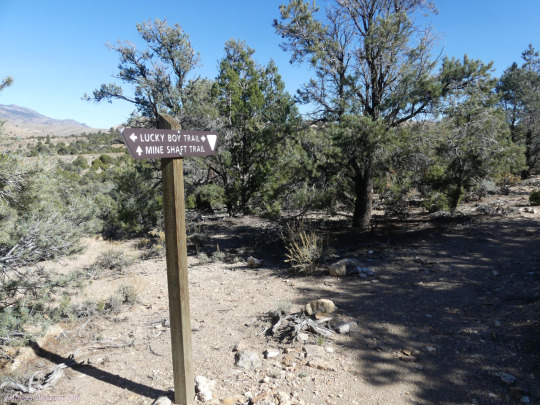
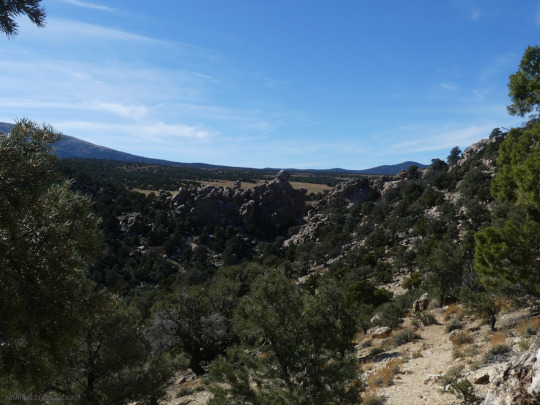
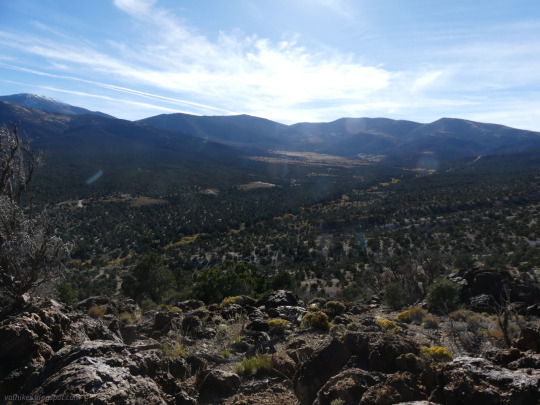
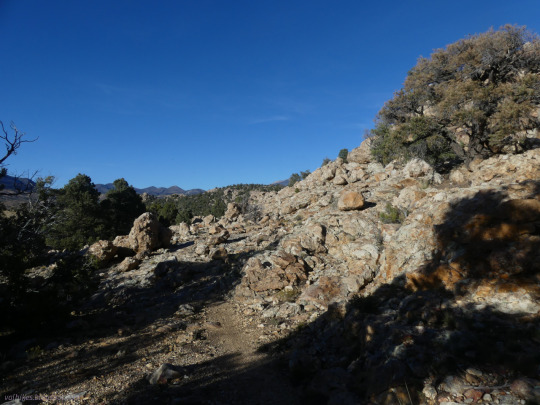
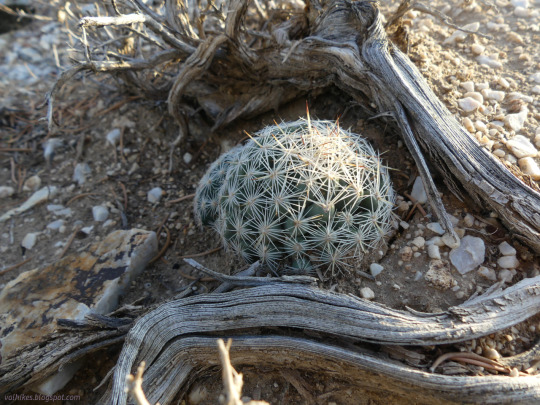
Bristlecone Field Office BLM, Nevada
Following the eclipse, I took to wandering the looping trails at the Sacramento Pass Recreation Area.
#hiking#nature#landscape#travel#hike#outside#day hike#Nevada#desert#Sacramento Pass Recreation Area#Bristlecone BLM#Ely BLM#nature photography#cactus
4 notes
·
View notes
Text

Bristlecone Loop Trail, Brice Canyon National Park, Dixie National Forest, Southern Utah, USA, 31 July 2024. A Magical Landscape 😎
#original photography on tumblr#utahphotographer#snapshot#phtotographers on tumblr#landscape#hiking#wanderlust#landscape photography#hikingphotography#wanderer#dramatic landscape#landscapephotography#utahphotography#utahmountains#mountainlandscape#redrocks#usa#utahlandscape#hikingadventures#hiking photography#hikingutah#hikingaddict#travelphotography#national forest#nationalpark#bluesky#skyline#backpacker#backpack#hikingtrails
5 notes
·
View notes
Photo

A few months ago, I had the great opportunity to visit the Mighty Five National Parks of Utah, which includes Bryce Canyon National Park. The trip was part of an ongoing project with Marriott International, The Americas, to highlight some incredible places around the country, including our national parks. Few would disagree that there is something almost magical about America’s National Parks. Often called America’s Best Idea, each park is the result of years of tireless work on behalf of concerned citizens who wanted lands they felt to be unique and undeniably special to be protected forever. The National Park System represents the North American model of conservation, which itself was a hard concept to introduce to the general public more than a century ago but today is the standard by which similar parks around the world are judged. Reserving lands for posterity was not a popular idea at the time, but thanks to a handful of forward-thinking individuals, we as a country have now saved some of the planet’s most incredible natural and cultural wonders, including Bryce Canyon. To help inspire you to visit or just better plan your own trip, here are a few things you should know about Bryce Canyon National Park.
Bryce Canyon National Park & Getting There
Exploring the Park in a Day
One of the many reasons why I love visiting the National Parks is how accessible they are even if you don’t have a lot of time to visit. Sure, you could spend many days exploring Bryce Canyon but that’s not a luxury everyone can afford. Just because you don’t have a lot of time doesn’t mean you can’t see the best of the parks. Decades ago a concerted effort was made to create driving loops in almost every National Park to allow visitors to easily and quickly see the best or most popular features of each park. So, if you just have two or three hours yes, you can still experience the best of Bryce Canyon with ease. One thing to keep in mind about the National Parks of the West though is just how big they are. Even though driving loops exist, the vast size of the parks themselves means you still have a lot of driving to do even if only to see the highlights. Before the trip I purchased a National Parks Annual Pass, which is honestly a smart thing to do if you plan on visiting two or more parks in a year. Not only did it save me money, but it made getting in and out of the parks easier as well. Before tackling the driving route, I stopped off at the visitor’s center to learn more about Bryce Canyon and which stops along the drive I thought made the most sense for me to see.
Getting to Bryce Canyon is pretty easy, especially if you’re visiting all Mighty Five National Parks. I overnighted about an hour away since it was convenient to both Capitol Reef and Bryce. A small town has also evolved around Bryce Canyon, mostly because it’s a remote spot, and there are many lodging opportunities there as well. People visit Bryce Canyon either independently, as part of a longer Mighty Five trek or part of a circuit going from the Grand Canyon to Zion and then Bryce Canyon.
Like most of the Parks in this part of the country, Bryce Canyon is massive but is set up in such a way that makes it pretty easy to explore even if you’re light on time. More than 2 million people visit Bryce Canyon every year; far fewer than Zion or the Grand Canyon, but still a significant number. They’re in the park to experience the otherworldly feel of the region and given the fact that it’s somewhat remote, spend at least a day exploring Bryce Canyon. It’s not actually a single canyon though, it’s a series of natural amphitheaters carved into the edge of a high plateau. Inside these geological bowls are any number of incredible rock formations, including hundreds of hoodoos. There’s more to the park than just one viewing spot though, as I learned during my own exploration of this incredible part of the country.
There’s a lot to love about exploring Bryce Canyon National Park, but some of my favorite activities include:
Shuttle System
Bryce Canyon provides a complimentary shuttle system to some of the most popular spots in the park and I think it’s the best way to start the trip. Unlike Zion, which has a mandatory shuttle system, you can also self-drive but the parking lots are small at the viewpoints and the park does get busy, so the shuttle is just easier. It also runs on a regular schedule and I never had to wait for more than a few minutes.
Bryce Amphitheater
Start with the most recognizable part of the park, Bryce Amphitheater. There are many different ways to experience the amphitheater, including an easy hike between the most famous viewpoints. Take the shuttle to Bryce Point and from there hike the easy Rim Trail for three miles to Inspiration, Sunset and Sunrise Points. You’ll see the canyon from a variety of different angles and gain a much deeper appreciation for its inherent beauty. If you’re feeling a little more adventurous, you can also hike down into the canyon itself to admire the hoodoos from a very up close and personal perspective. Just stop by the Visitor’s Center on your way into the park to pick up a map, learn more about the trail options and see what the weather conditions are like for the day you’re visiting. Although the park is very well maintained, ultimately personal safety is up to the individual so be smart.
Scenic Drive
There’s much more to Bryce Canyon though than just the amphitheater. Be sure to drive the entire length of the main park road, about 18 miles that ends at the Park’s highest elevations at Rainbow and Yovimpa Points. There’s also an easy 1-mile Bristlecone Loop which is a fun walk. Along the way there are several viewpoints to stop, stretch your legs and admire the incredible scenery.
Day Hikes
Other than the Bristlecone and Rim Trails, there are many other fun day hikes if you have the time and inclination. Mossy Cave Trail is located right outside of the amphitheater and is a streamside walk up to a mossy overhang and small waterfall. It’s also less than a mile round trip and very manageable for just about anyone. If you’re looking for an easy way into the canyon, then the Queens Garden Trail is the one for you. It’s 1.8 miles round-trip and is widely considered to be the least difficult route into the heart of this gorgeous natural wonder.
Surrounding Area
This is actually a great part of the state to visit as there are plenty of other experiences outside of the National Park. Anasazi State Park Museum shares the history of an ancient Native American village that once stood here. Bryce Canyon is also part of the much larger Grand Staircase National Monument, one of the most remarkable geological features in the country. There are also quirky ghost towns, shops selling just about anything and plenty of restaurants in the village surrounding Bryce Canyon.
Where to Stay
My experience visiting Bryce Canyon may be a little different than other people because it was a full-day stop for me as I traveled from Capitol Reef National Park to Zion National Park. It was better for me to have shorter drives after spending an entire day hiking around the parks. If you’re visiting the Mighty Five, this is the best way to manage the trip.
Fairfield Inn & Suites Richfield
I decided to spend the night in Richfield, Utah since it was just an hour from Capitol Reef and set me up pretty well to visit Bryce Canyon National Park the next day. Richfield is a good-sized community, which means there were plenty of options for dinner and even big box stores to pick up supplies. My hotel for the evening, the Fairfield Inn & Suites Richfield, couldn’t have been better for my needs. Warmly greeted, the hotel looks new and updated and my room was enormous; more than enough space to spread out and relax. After a long day of driving and exploring national parks, in the evenings all I wanted to do was decompress and get some work done in peace and quiet. There was a great restaurant next door to the hotel, but there are many others less than a 5-minutes drive from the Fairfield. I loved this spot along the Mighty Five route since it was convenient and didn’t force me to go out of my way.
Bryce Canyon National Park is one of the country’s great natural treasures and it should be a place everyone has on their travel bucket list. No matter how you choose to experience the park, just make sure you take the time to experience its grandeur in person for a trip you’ll never forget.
To learn more about Utah’s Mighty Five National Parks, please be sure to listen to the episode of the Explore the World Travel Podcast I devoted to them.
The post Bryce Canyon National Park: What to Know & Why Everyone Should Visit appeared first on LandLopers.
0 notes
Text
6 Spring Hiking Spots for Allergy Sufferers
Spring sneezing season has begun. Unfortunately, the pollen counts across the country tend to rise just as prime hiking season begins and, if you’re living with allergies, it can put a damper on your outdoor experience. We’ve rounded up a few places you can head to get away from the sniffles and take in some pretty incredible views.
Columbia River Gorge, Oregon
The Pacific Northwest maintains one of the mildest pollen counts in the United States and is the perfect location to hit the switchbacks. The Columbia River Gorge is arguably the most stunning region in the state and contains some of the most difficult hikes along the Oregon and Washington border. If you can manage to hike in on a rare sunny day you’ll be treated with expansive views of the Gorge and surrounding mountains, but it’s still incredibly beautiful here even when it rains.
Joshua Tree National Park, California
Southern California benefits from a Mediterranean-like climate that leans toward dry summers and mild, slightly rainy winters. This is great news for allergy sufferers since it leads to a distinct lack of vegetation in many of the region’s vast natural parks. Joshua Tree is a wonderfully unique place to trek as it houses more boulders and sand than flowers. Spring is the perfect time to hit up the park thanks to mild temperatures that’ll keep you from overheating.
San Juan Mountains, Colorado
Telluride is predominately known as a ski town but the surrounding San Juan Mountains and box canyon make for some pretty epic hikes during the latter portion of spring, if the snow gives way in time. Pollen is virtually non-existent at 8,700 feet so you’ll have no trouble exploring the likes of the Hawn Mountain Trail or the Mill Creek Loop, both of which offer breathtaking scenery and the chance to scope out some unique wildlife. If you’re looking for something a little less strenuous the Owl Gulch Hiking trail is great for beginners and offers ample shade from the sun.
Lake Tahoe, Nevada
Between the Mt. Tallac Hike and the Skyline Trail, Lake Tahoe South offers some of the most pristinely beautiful sights in the world. The high elevation makes it difficult for pollen to thrive, which will give your allergies some much-needed relief. The Rubicon Trail Hike along the shores of Emerald Bay boasts staggering panoramas along with coves, cliffs, waterfalls and even an old lighthouse.
North Shore, Hawaii
Not only does Hawaii’s North Shore host an incredible array of sandy white beaches and ocean landscapes, the warm breeze also works to help keep pollen at bay. Since allergies typically develop after you’ve been subjected to the local fauna for a while, visitors to the state will find themselves sneeze-free while hiking the Lanikai and Ehukai Pillbox Trails. The flowers and blossoms here are radically different than on the mainland, so it’d take a while for you to become allergic to any of them, leaving plenty of time to explore the region.
Bryce Canyon National Park, Utah
Zion National Park sees some pretty hefty pollen counts when the first blooms arrive in spring, but nearby Bryce Canyon has elevations so high that you’ll be breathing nothing but fresh air as you climb to the top. The Peek-a-Boo Loop is worth the 5.5-mile trek it takes to reach the end just to catch a glimpse of the iconic Wall of Windows. If you’re looking for something a little easier, the Bristlecone Pines Hike is only one mile long but reaches 9,100 feet for astounding views of the region.
from Stansport Blog https://blog.stansport.com/6-spring-hiking-spots-for-allergy-sufferers/
0 notes